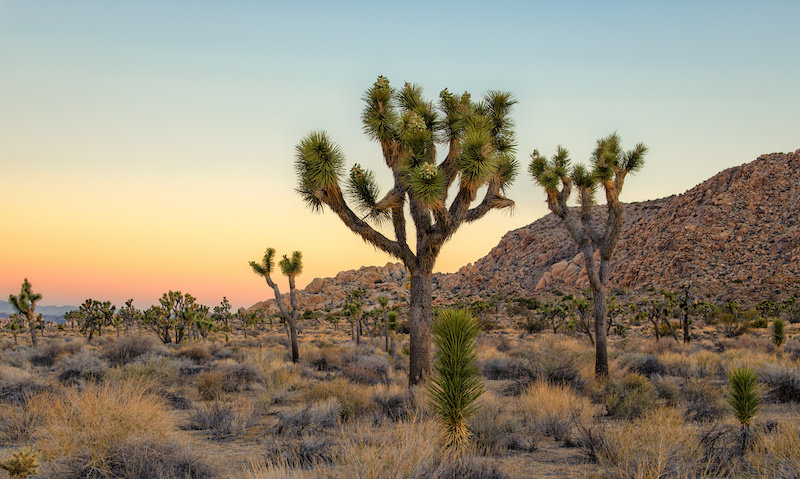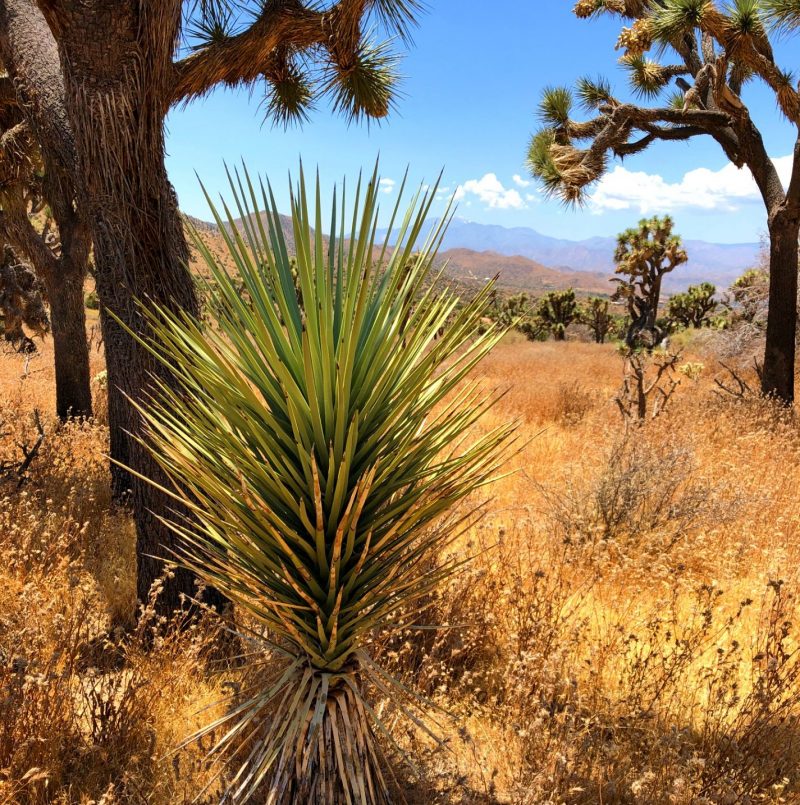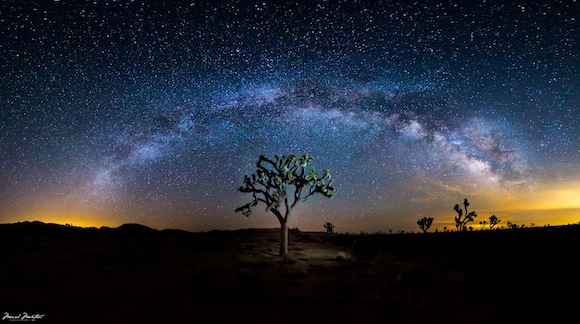
A new study that looked at global warming’s impact on trees in California’s Joshua Tree National Park suggests that without dramatic action to reduce climate change, the iconic trees won’t survive much past this century.
The study, published June 3, 2019, in the peer-reviewed journal Ecosphere, examined data from more than 4,000 trees in order to predict how our warming climate might effect the park’s namesake trees, as well as to find out whether the trees are already in trouble.
The researchers found that Joshua trees have been migrating to higher elevation parts of the park that have cooler weather and more moisture in the ground. In hotter, drier areas, the adult trees aren’t producing as many younger plants, and the ones they do produce aren’t surviving.

Joshua trees as a species have existed since the Pleistocene era, about 2.5 million years ago, and individual trees can live up to 300 years. One of the ways adult trees survive so long is by storing large reserves of water to weather droughts. But younger trees and seedlings aren’t capable of holding reserves in this way, and the most recent, 376-week-long drought in California left the ground in some places without enough water to support new young plants. As the climate changes, long periods of drought are likely to occur with more frequency, leading to issues with the trees like those already observed, says the study.
An additional finding of the study is that in the cooler, wetter parts of the park the biggest threat, other than climate change, is fire. Fewer than 10 percent of Joshua trees survive wildfires, said the researchers.

According to the researchers, the new study suggests several possible outcomes. In the best-case scenario, major efforts to reduce heat-trapping gasses in the atmosphere would save 19 percent of the tree habitat after the year 2070. In the worst case, with no reduction in carbon emissions, the park would retain a mere 0.02 percent of its Joshua tree habitat.

Bottom line: A new study predicts a gloomy future for the trees in California’s Joshua Tree National Park.











